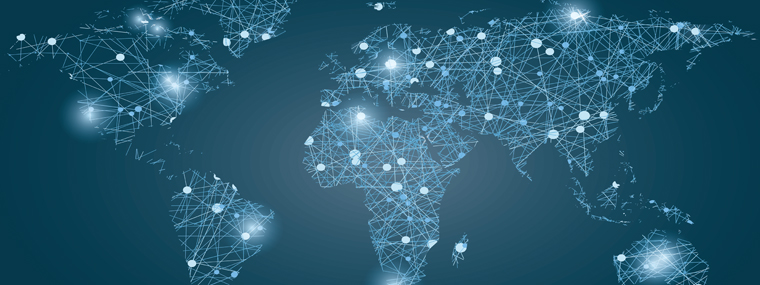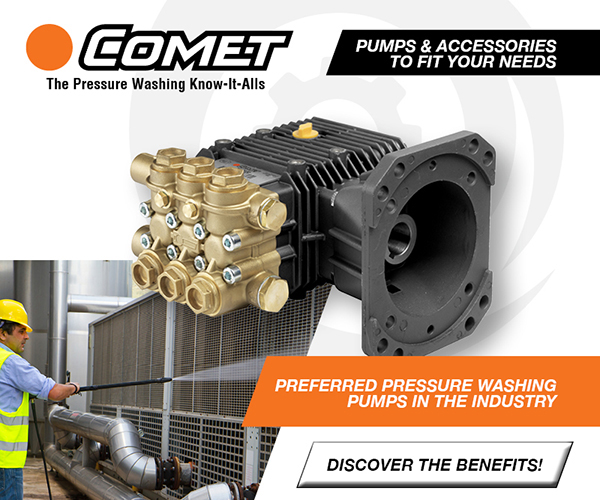
International Markets: Finding and Filling Your Company’s Niche
By Diane M. Calabrese / Published March 2015
Opportunities and obstacles both multiply as a sales territory grows. To embrace the possibilities in international markets, look first at the landscape through the eyes of a potential customer.
“Each market is different,” says Curtis Braber, president of BE Pressure Supply, Inc. in Abbotsford, BC, Canada. “In North America, we favor gasoline engines for their portability, while in many other countries with a stronger electrical supply in 240 volt, they heavily favor electric. Manufacturers must find where they fit in these international markets and fill the niche that may not be readily served in the market.”
Study the needs of each market, says Braber. “Preferred designs, accessories, and performance” must be assessed. Customers differ in wants. “Some prefer higher flow rates with lower psi ratings while others prefer higher psi and lower flow rates.”
Markets also have different design styles at their core. “For example, in Europe, quick-connect fittings are not common—the hoses, wands, etc., are typically screw-type fittings,” explains Braber. “In North America, we favor an open-style frame design for hot and cold pressure washers, where you can easily see the components and get at the parts to do quick repairs. In Europe, they favor a closed design with smooth, sleek covers over the engines and pumps—they feel this is a more ‘complete’ look.”
And the preferences in performance, configuration, and design are just the beginning. “Certification is another challenge, CE in Europe or C-Tick in Australia, for example,” says Braber.
“You have to do your homework for the proper fit in the marketplace,” says Jeff Burros, export manager at Alkota Cleaning Systems, Inc. in Alcester, SD. “For example, you do not want to be selling a 115-volts machine in a country that only has 220-volts with 50-hertz voltage available or a five gpm machine where the water flow is only three gpm from their water source.”
Aligning the export requirements of the United States with the import requirements of the country where the buyer is situated is another part of the customer profile. “Know your customer’s market, country requirements, and U.S. government laws and regulations for exporting your product,” says Burros. “There are many rules involved and knowing what they are makes a smooth sale.”
The customer profile extends to knowing who the customer is. In some instances, that may be the most difficult part of the picture to complete.
“The biggest challenge we face at our company is avoiding fraud with new, potential customers,” says Burros. “Knowing who the customer is and his business is very important. Are they a distributor, importer, or end user? There is so much phishing on the Internet, you just need to be careful.”
Getting an accurate look at the customer is necessary in order to ensure that payment for goods will be made. Payment is an important issue, says Burros. A company should weigh the pros and cons of any method of obtaining payment and use the one that best suits its objectives.
“There are many different types of payment requirements, such as letter of credit, credit card, company check, wire transfer, or open terms,” explains Burros. “I always prefer a wire transfer of funds at the time of shipping with new customers. I don’t accept credit cards or company checks due to a high amount of fraud. A letter of credit requires banks and additional fees, so I avoid this as much as possible.”
Equilibrium
Markets change constantly. Making sense of the dynamism and keeping a positive bottom line is just part of doing business inside or outside national borders. It can be trickier across borders to stay apprised of all the variables in play each day.
And the number of variables cannot be underestimated. Take shifts that may occur literally overnight. “The impact that geopolitical reality has on everyday transactions, the most recent example being the sanctions on Russia” is a real challenge, says Raymond Little, vice president at A.R. North America, Inc. in Fridley, MN.
The swiftness with which trade sanctions may be imposed stands in opposition to all the elements of preparation. The culture of the territory must be understood, says Little. That includes being patient across the longer time it may take for decisions to be made. “Don’t expect things to happen overnight,” he explains.
Currency exchange rates pose another challenge. “They fluctuate considerably, and this factor alone can make all the difference on whether your product is competitively priced or if you are priced out of the market,” says Little.
Not all is lost if you’re priced out of a market today because of exchange rates, though, explains Little. Because the rates are historically cyclical, “the situation could change dramatically, even on short notice.”
There is no way to overstate the role that preparation plays in a successful sale. “In many territories worldwide, the import tariffs on products can be very high,” says Little. Accuracy in documentation is a crucial factor in ensuring that the buyer does not incur additional and unnecessary costs.
In some instances, international customers will seek exclusive distribution agreements, says Little. He advises analyzing such arrangements on a case-by-case basis. “They often turn out to be the best way to distribute products in a given territory,” he explains.
“There are some products, which are easier to sell internationally,” says Little. The products are based on applications that are not popular in the United States. Little cites the example of farmers in the United Kingdom who drive their high-pressure cleaning pumps using the 540-rpm PTO shaft on their tractors.
Know, too, says Little, that in many international markets much more repair work is done on units—even consumer units. That makes the units last longer and requires more parts.
“I do have to say that loyalty from international customers is at a high level once the initial difficulties have been overcome,” says Little. If the customer is treated with “the core values of honesty, transparency, and reliability,” the customer will remain loyal.
“Selling internationally means that the customer often has to place his trust in you and your products—many times without having even met you,” says Little. “This, especially for developing countries, equates to a huge commitment on the part of the buyer. The seller needs to keep this in mind in all of his transactions.”
Movement
Once a product has gone beyond the border of the place where it originated, it still has ties back home. “The ability for us to identify the best possible distribution and service channels for the products we offer is a big challenge,” says Vaughn Grimm, government and export division manager at Mi-T-M Corporation in Peosta, IA.
“Here in the United States, we offer our products through many different types of markets—distributors, OEMs, equipment/construction houses, national and independent rental yards, do-it-yourself, ag and paint stores,” says Grimm. “We have a great understanding of how these markets work…and we work very hard to build our brand in these markets….” Outside the United States, the types of markets “may or may not operate in the same manner.”
The positive of receiving an order for an international customer must be looked at in context, explains Grimm. It’s important “to take care of the customer after the sale with great service and support.”
One way to start on good footing is to acknowledge the unique way of doing business each country has. “We need to check and double check with the customer to make sure we’re on the same page regarding the product or products they are interested in,” says Grimm.
Following on that is the verification of all required and correct export documents for an international shipment. Documents for country ‘A’ may
be different from those for country ‘B’ and so on. Use the incorrect document and a customs hold may ensue, explains Grimm. And try to acquire language skills beyond English, says Grimm. Such skills are a real plus.
“Our company offers a wide range of products with pressure washers being our most well-known product,” says Grimm. “Our expanded lines of air compressors, combination air compressor/generators, combination air compressor/generator/welders, portable generators, industrial wet/dry vacuums, job site storage boxes, portable heaters, and semi-trash water pumps are gaining traction outside the United States as well.
“When dealing with international customers, offering diesel and gasoline-driven products gives our company flexibility since these fuels are readily available,” explains Grimm. “When offering products that are electrical driven, we need to understand and identify the exact voltage, phase, and frequency within the country we’re selling into.”
And Grimm gives the following example: In Peru, their electrical requirements primarily are 220v/1ph/60hz to 220v/3ph/60hz. In Chile, the requirements range from 240v/1ph/50hz to 220–380v/3ph/50hz.
Each country is a different entity and adjustments of every sort must be made to sell in international markets. Begin there without trepidation. Keep in mind that the balance between risk and reward in any selling of merchandise has for so long been understood that ware and wary derive from the same root word—one that indicates watchful care or keeping valuable goods (and services) safe.





